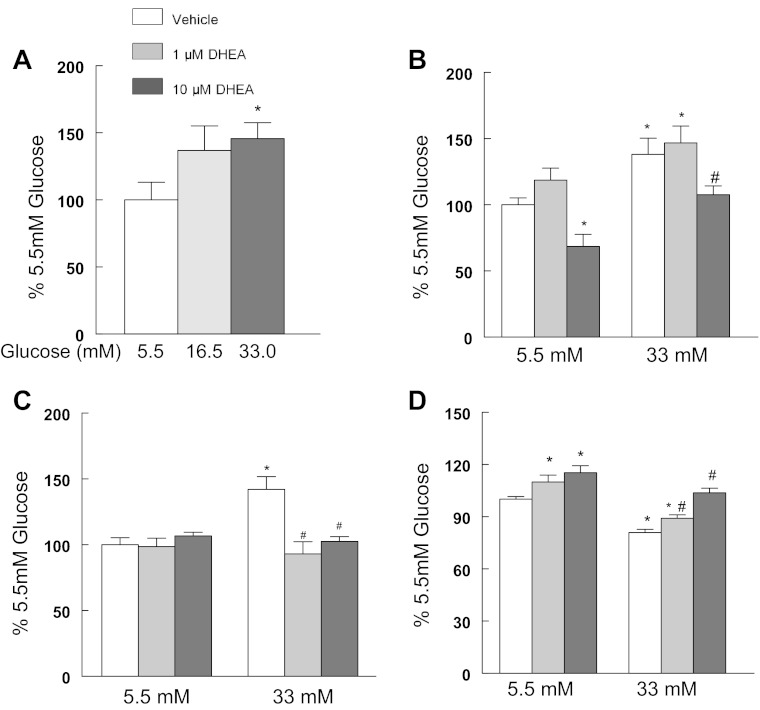Fig. 2.
Elevated glucose increased glucose-6-phosphate activity to increase cytosolic reactive oxygen species (ROS) and induce mtDNA damage. Cardiomyocytes were maintained in DMEM/1% FBS and exposed to 5.5, 16.5, or 33 mM glucose for 13 days. A: elevated glucose increased glucose-6-phosphate dehydrogenase (G6PdH) activity in cardiomyocytes. B: dehydroepiandrosterone (DHEA) counteracted glucose-induced increases in cytosolic ROS. Cells were treated with 20 μM DHE for 30 min before being washed, and cells greater than 10 μm were counted in a Guava Easycyte Cytometer. C: DHEA prevented mtDNA damage from increased glucose exposure. mtDNA damage was assessed using the LRPCR protocol. D: DHEA restored ATP production in glucose-challenged cardiomyocytes. Values are normalized to 5.5 mM glucose or 5.5. mM vehicle and are means ± SE. *P < 0.05 compared with the 5.5 mM glucose control; #P < 0.05 compared with 33 mM glucose/vehicle.

